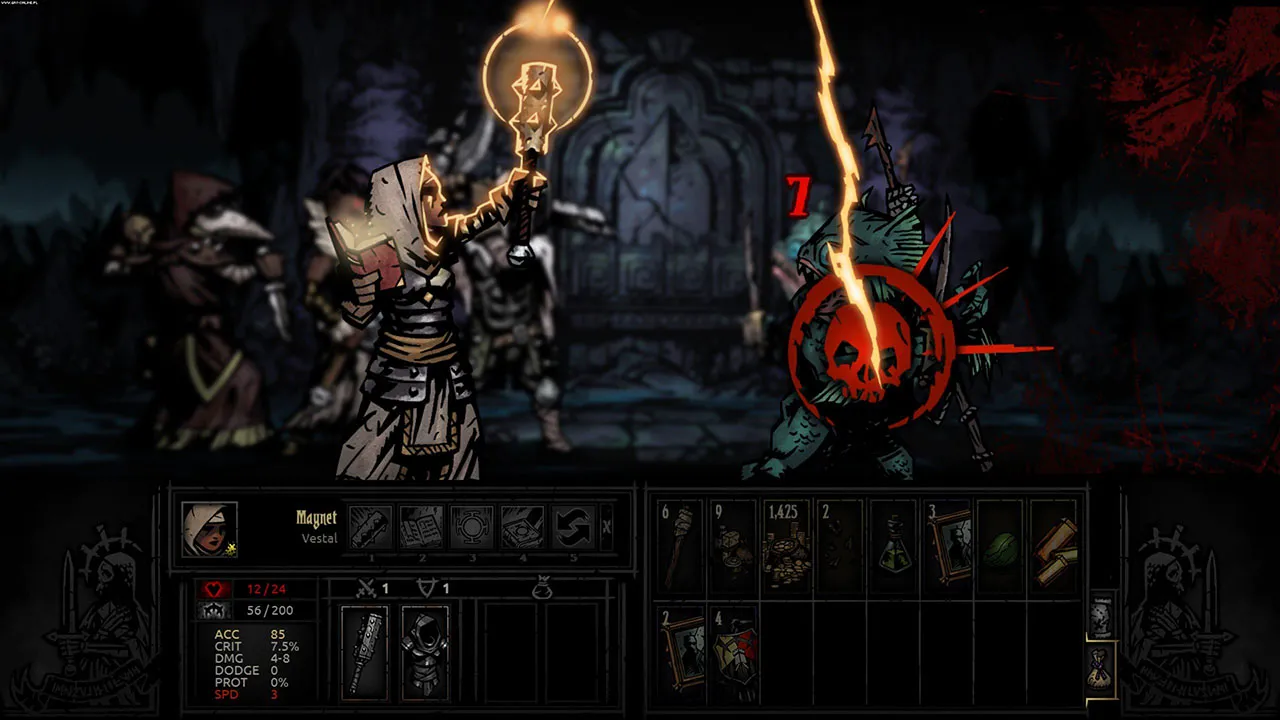
Delving into the Darkness: A Darkest Dungeon Review
Contents
The name H.P. Lovecraft resonates deeply with fans of horror, whether in literature or film. While underappreciated during his lifetime, Lovecraft’s work has since become a cornerstone of the cosmic horror genre, influencing countless stories and even spawning its own fictional universe, often referred to as “Lovecraftian.” This genre explores the insignificance of humanity against terrifying cosmic entities from other dimensions, complete with tentacles, fangs, and otherworldly horrors. Many video games have embraced this theme, from direct adaptations to subtle inspirations like Grim Dawn and Bloodborne. While the grotesque imagery and unsettling atmosphere can be niche, it adds to the mystique and allure of the Lovecraftian world. Among the most successful Lovecraftian games is Darkest Dungeon, a chilling and captivating title from Red Hook Studios. While not a new release, Darkest Dungeon‘s quality and unique gameplay warrant revisiting, especially for those unfamiliar with its dark depths.
 The Hamlet in Darkest Dungeon
The Hamlet in Darkest Dungeon
A Descent into Madness: Story and Setting
Darkest Dungeon centers around a wealthy eccentric known as “The Ancestor.” Despite a life of luxury, he finds himself drawn to whispers promising hidden secrets beneath his ancestral manor. He invests his fortune in excavating a vast labyrinth below the estate, eventually uncovering a gateway to an ancient, buried shrine. In true Lovecraftian fashion, this act awakens a terrifying entity that slaughters his workers and possesses The Ancestor himself. In a last act of sanity, he pens a letter to his last remaining heir (the player), urging them to return and save the family from the unleashed evil.
The player’s journey home is fraught with peril, beginning with a bandit ambush in the surrounding woods. Forced to fight their way to a dilapidated hamlet, this becomes the player’s base of operations, a staging ground for assembling a team to venture into the corrupted lands surrounding the estate.
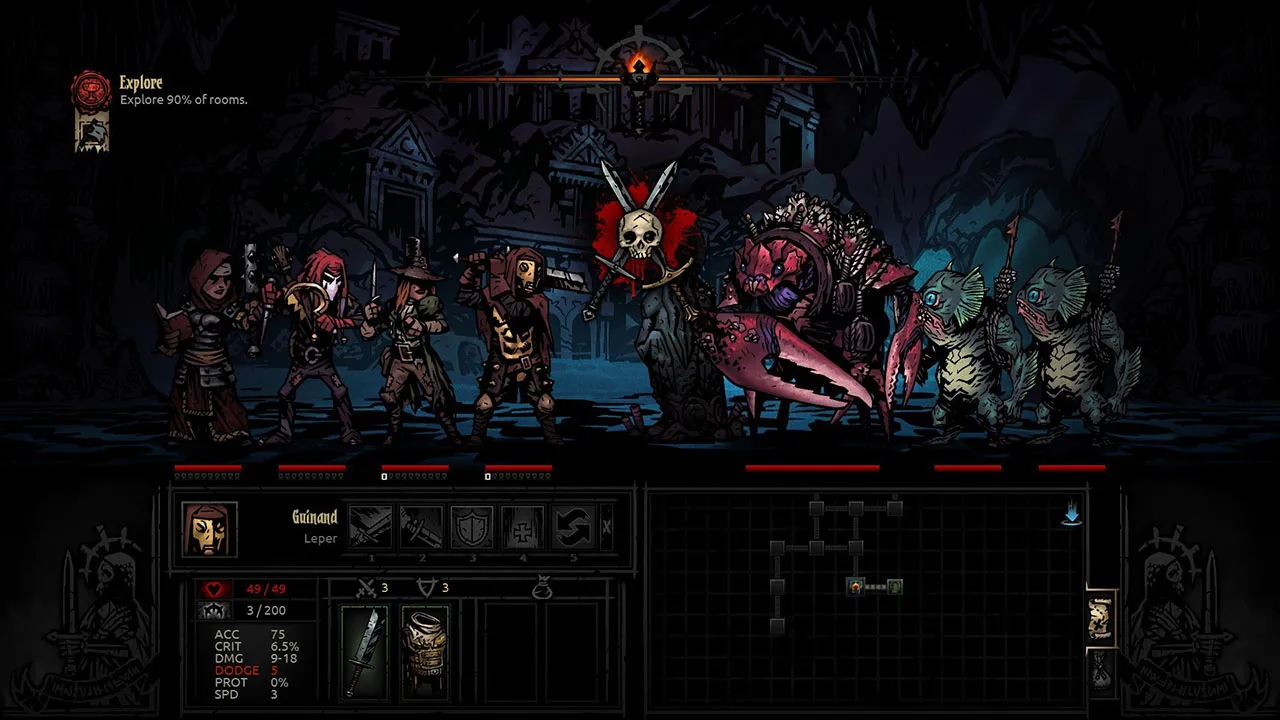 A party of adventurers in Darkest Dungeon
A party of adventurers in Darkest Dungeon
Gameplay: A Grim Dance with Death
At its core, Darkest Dungeon is a roguelike RPG, with procedurally generated levels ensuring each playthrough is unique. The player assembles a team of four characters from various classes, embarking on perilous expeditions into the dungeons. Each foray is self-contained, requiring careful planning to avoid permadeath.
Combat unfolds in turn-based fashion, with the player’s party and enemies facing off in ranked formations. Each unit has unique attacks with varying damage, effects, and ranges. Positioning is crucial, as some attacks only reach the front ranks. A key mechanic is the “stress” level of each character. Certain attacks inflict minimal physical damage but significantly increase stress. High stress leads to negative quirks, missed attacks, critical hits, and even mental breakdowns, impacting the entire party.
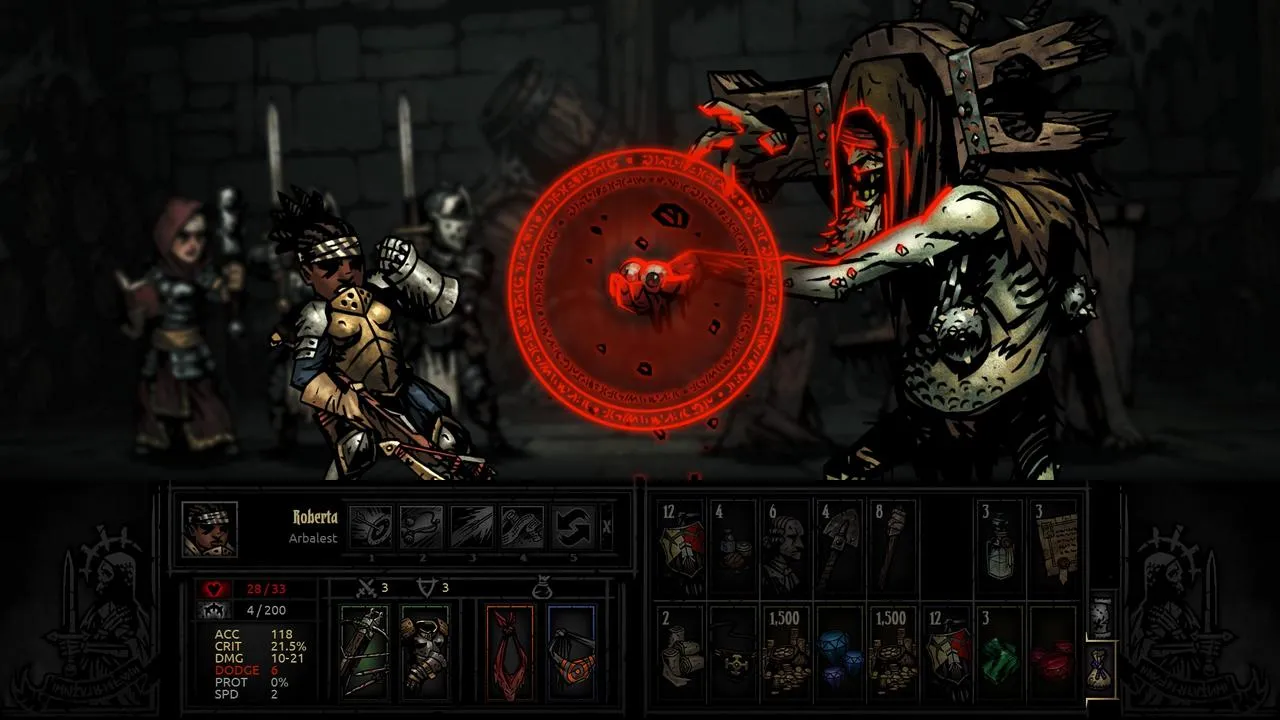 Combat in Darkest Dungeon
Combat in Darkest Dungeon
Darkest Dungeon innovates on the roguelike formula with unique mechanics like the “light” system. Dungeons are shrouded in darkness, requiring torches for navigation. Dim light increases the chance of encountering powerful enemies, while complete darkness offers greater rewards. This creates a constant risk-reward dilemma.
Returning from expeditions, characters suffer psychological trauma, regardless of success or failure. Managing stress is vital, and recovery requires engaging in “stress-relieving” activities in the hamlet. These range from drinking and gambling to more… unconventional methods. However, these activities can also lead to negative quirks, impacting character behavior and adding another layer of complexity to team building.
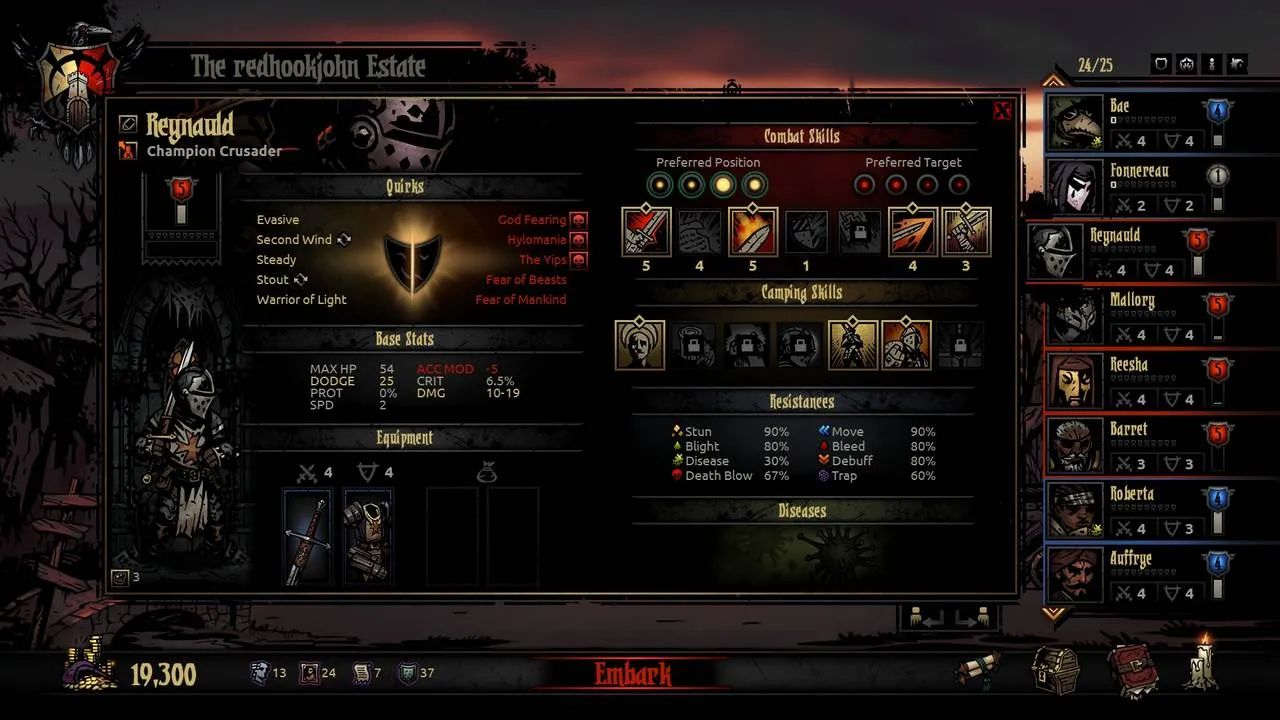 Stress relief activities in Darkest Dungeon
Stress relief activities in Darkest Dungeon
A Distinctive Visual Style
Darkest Dungeon‘s striking art style immediately grabs attention. It’s a unique blend of beauty and grotesqueness, perfectly capturing the game’s dark atmosphere. The character designs blend medieval and early 20th-century influences, reflecting the game’s setting. The hand-drawn visuals, bold lines, and dark color palette create a strong comic book aesthetic, evoking the unsettling world of dark fantasy.
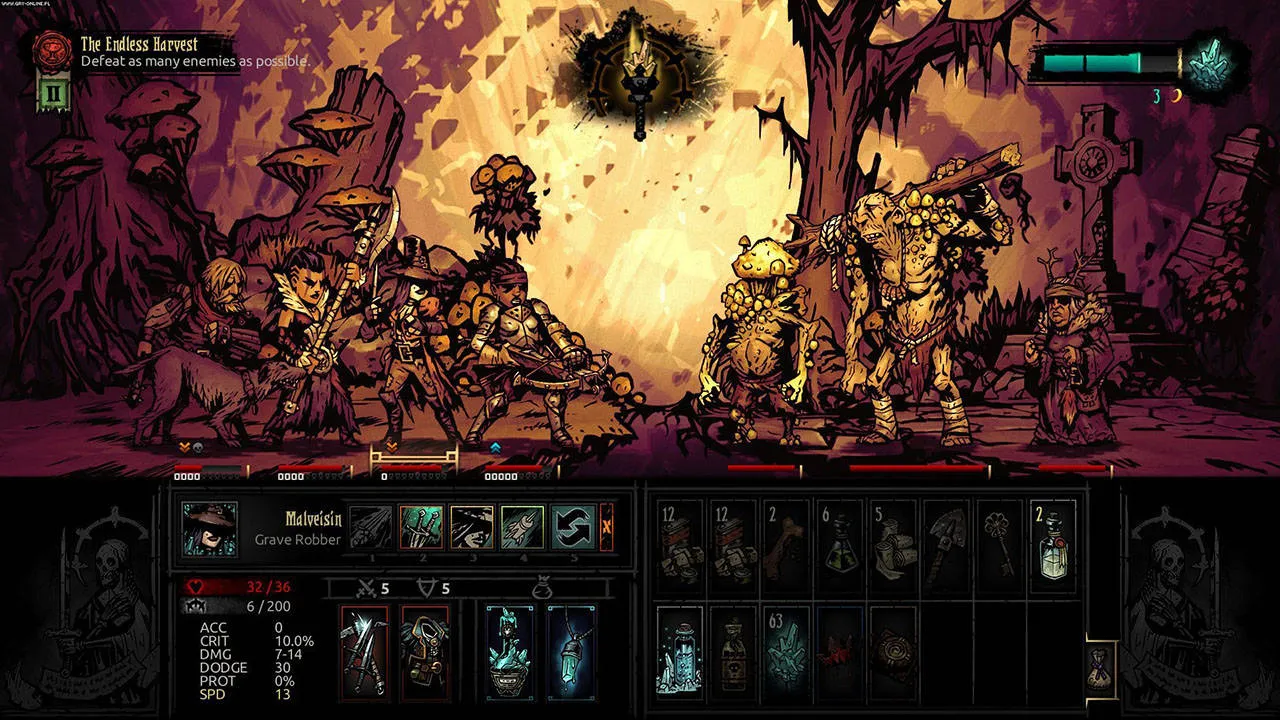 Character designs in Darkest Dungeon
Character designs in Darkest Dungeon
Enemy designs are equally grotesque, reflecting their environment. Bandits resemble humans with occasional monstrous mutations, while sea creatures blend aquatic features with human anatomy. The animations, though simple, effectively convey the brutality of combat, further enhancing the game’s grim atmosphere.
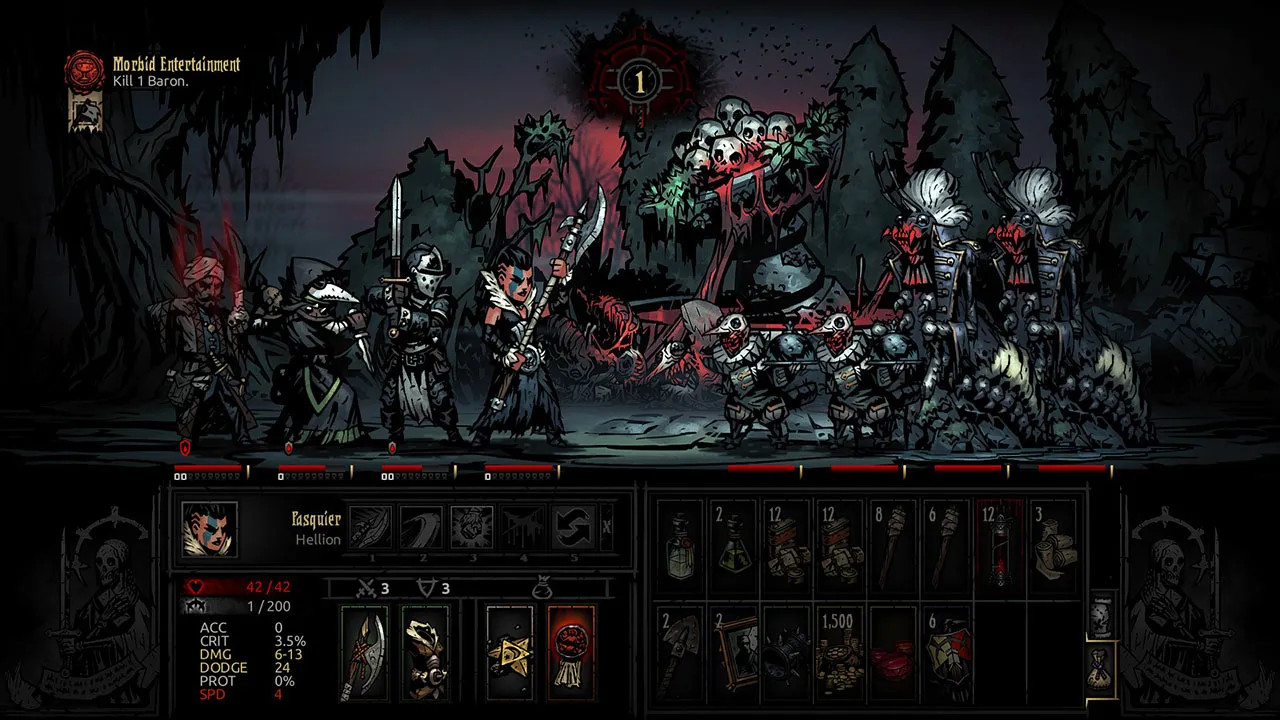 Enemy designs in Darkest Dungeon
Enemy designs in Darkest Dungeon
The Unforgiving Darkness: Difficulty
Darkest Dungeon‘s brutal difficulty is a defining characteristic. From the outset, players understand this is a game of attrition, not heroic triumphs. Enemies scale with the player’s level, and combat is a constant struggle against debilitating status effects like poison, bleed, and stun. Managing resources like gold, food, and torches adds another layer of challenge.
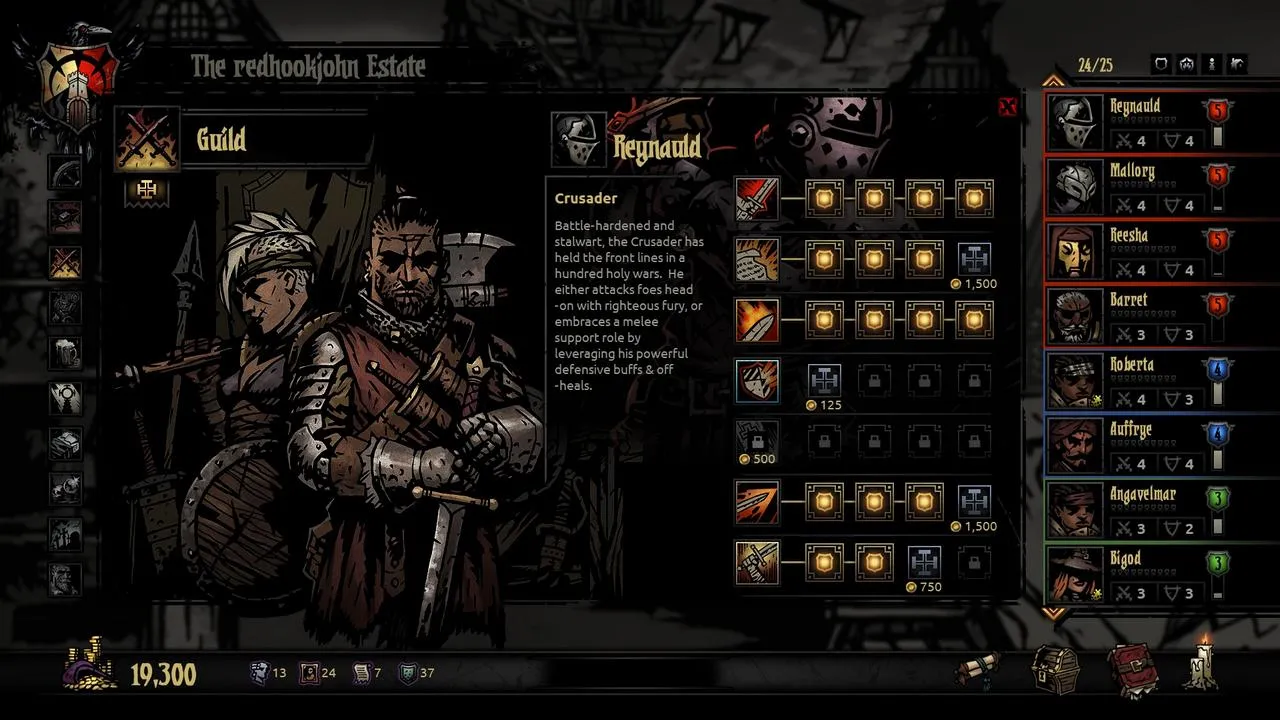 Death's Door mechanic in Darkest Dungeon
Death's Door mechanic in Darkest Dungeon
Permadeath looms large. When a character falls in battle, they enter “Death’s Door,” a precarious state where any further damage is fatal. Losing a character is permanent, a harsh reminder of the game’s unforgiving nature. The long dungeons, unpredictable events, and numerous resource management systems demand careful planning and a resilient mindset.
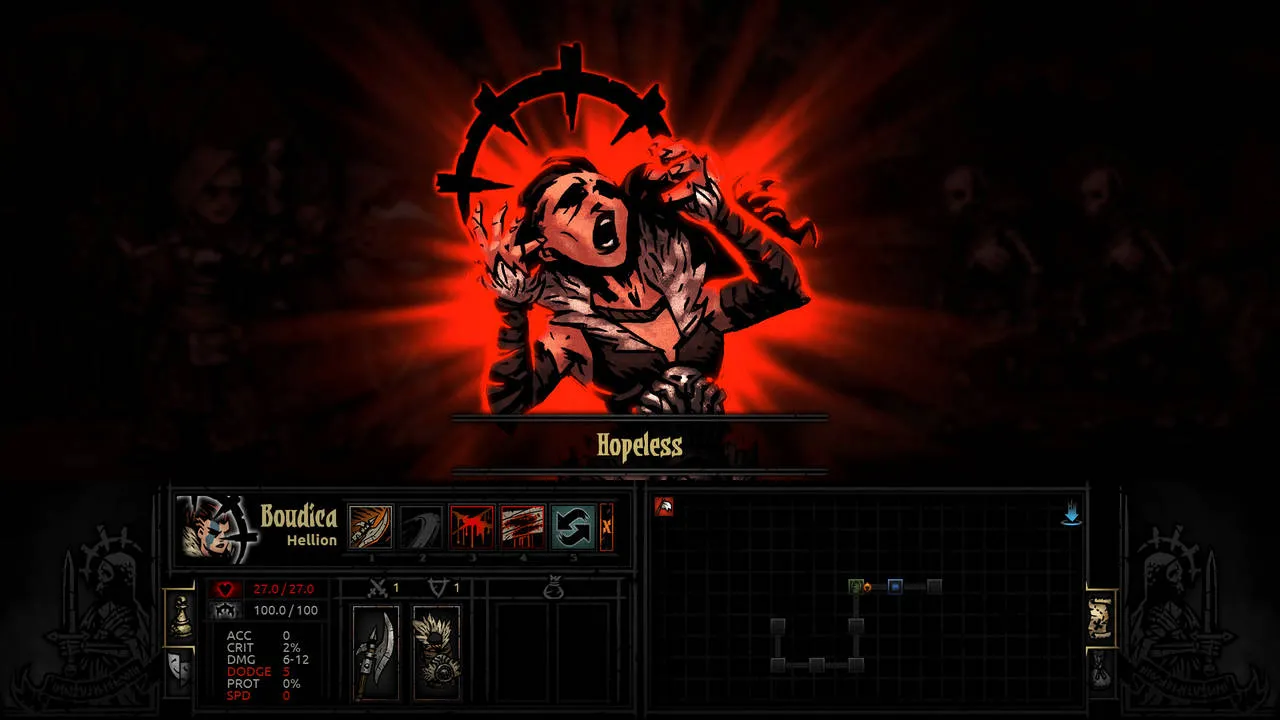 The Ancestor's estate in Darkest Dungeon
The Ancestor's estate in Darkest Dungeon
Conclusion: A Challenging but Rewarding Descent
Darkest Dungeon is not for the faint of heart. Its challenging gameplay, Lovecraftian horrors, and unforgiving difficulty can be daunting. However, for those who embrace the challenge, it offers a uniquely rewarding experience. The strategic depth, captivating atmosphere, and distinctive art style create a truly memorable descent into darkness.





Comments (0)